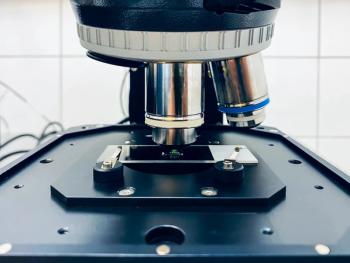
Long-Term Oral Corticosteroid Use Linked to Adverse Event Risk in Atopic Dermatitis
Patients with atopic dermatitis who use oral corticosteroids for more than 90 days have a slightly increased risk of adverse events like myocardial infarction and hyperlipidemia.
Patients with
Although AD is primarily a pediatric disease, studies have also
The researchers noted that international guidelines generally recommend that oral corticosteroids are avoided or limited to short-term use as a rescue therapy. However, due to their benefits, many patients with moderate to severe AD are
Despite this risk, there is limited knowledge of the associations between long-term use of oral corticosteroids and various AEs in patients with atopic dermatitis.1 Therefore, they investigated the association between long-term use of oral corticosteroids and AEs among adult patients with AD in South Korea.
The researchers used multivariable conditional logistic regression analyses to measure the risk of 11 individual outcomes as the composite outcome: fracture, osteoporosis, type 2 diabetes, hypertension, hyperlipidemia, myocardial infarction, heart failure, stroke, avascular necrosis (AVN), glaucoma, and cataract. They further classified the composite outcome into individual outcomes to evaluate the AE-specific risk in this population.
The study population was created using the nationwide Health Insurance Review and Assessment Service (HIRA) database of South Korea. The HIRA database encompasses comprehensive data on health care use for every South Korean resident, collecting information on diagnoses, prescribed medications, and socioeconomic and demographic variables until emigration or death.
Patients prescribed oral corticosteroids at least once with an AD diagnosis code from January 1, 2013, to October 31, 2020 were included in the study. The researchers defined cases as patients with atopic dermatitis diagnosed with any outcomes of interest after the cohort entry date. Controls were patients with atopic dermatitis who never received a diagnosis for any outcomes of interest. They matched each case with up to 2 controls with corresponding ages, sexes, follow-up durations, atopic dermatitis severities, and cohort entry dates.
To conduct the analyses, the researchers divided the study population into 2 exposure groups: moderate long-term oral corticosteroid use and extensive long-term use. They defined moderate long-term use as patients who used oral corticosteroids for more than 30 days, and patients with extensive long-term use were those who used them for more than 90 days.
Of the 1,025,270 eligible patients, the researchers matched 164,809 cases with 328,303 controls. The case and control group both consisted of 56.9% women and 43.1% men and had similar mean (SD) ages (case group: mean [SD] age, 39.4 [14.8] years; control group: mean [SD] age, 39.3 [14.7] years). Of both groups, 5533 cases (3.4%) and 10,561 controls (3.2%) were exposed to oral corticosteroids for over 30 days. Conversely, 684 cases (0.4%) and 1153 controls (0.4%) were exposed to oral corticosteroids for more than 90 days.
The researchers determined that the risk of AEs was not associated with using oral corticosteroids for more than 30 days (adjusted odds ratio [aOR], 1.0; 95% CI, 0.97-1.04), but using them for over 90 days was associated with an 11% increased composite adverse outcome risk (aOR, 1.11; 95% CI, 1.01-1.23). Additionally, each cumulative or consecutive additive year of long-term oral corticosteroid exposure was associated with a slightly increased AE risk (aOR, 1.06; 95% CI, 1.0-1.13).
In the individual outcome analyses, the researchers found an increased risk for hypertension (aOR, 1.09; 95% CI, 1.03-1.15), cataract (aOR, 3.22; 95% CI, 1.05-9.85), and AVN (aOR, 2.56; 95% CI, 1.82-3.62) in patients who used oral corticosteroids for more than 30 days. Among those who used oral corticosteroids for more than 90 days, they found an increased risk for fracture (aOR, 1.22; 95% CI, 1.05-1.42), AVN (aOR, 6.88; 95% CI, 3.53-13.42), hyperlipidemia (aOR, 1.16; 95% CI, 1.03-1.30), and myocardial infarction (aOR, 2.22; 95% CI, 1.17-4.22).
The researchers acknowledged study limitations, one being that the population only consisted of South Korean patients. Therefore, their findings may not be generalizable to other populations. Also, unmeasured confounders may be present, so the results should be interpreted carefully. Despite these limitations, the researchers suggested areas for further research based on their findings.
“Future investigations are warranted to confirm this potential risk of AEs associated with long-term use of oral corticosteroids for patients with exacerbations of AD, and health care professionals should thoroughly weigh the benefits associated with oral corticosteroids against the observed small risk of AEs, while continuously monitoring for AEs,” the authors concluded.
References
- Jang YH, Choi EY, Lee H, et al. Long-term use of oral corticosteroids and safety outcomes for patients with atopic dermatitis. JAMA Network Open. 2024;7(7):e2423563. doi:10.1001/jamanetworkopen.2024.23563
- Sacotte R, Silverberg JI. Epidemiology of adult atopic dermatitis. Clin Dermatol. 2018;36(5):595-605. doi:10.1016/j.clindermatol.2018.05.007
- Yu SH, Drucker AM, Lebwohl M, Silverberg JI. A systematic review of the safety and efficacy of systemic corticosteroids in atopic dermatitis. J Am Acad Dermatol. 2018;78(4):733-740.e11. doi:10.1016/j.jaad.2017.09.074
Newsletter
Stay ahead of policy, cost, and value—subscribe to AJMC for expert insights at the intersection of clinical care and health economics.















































